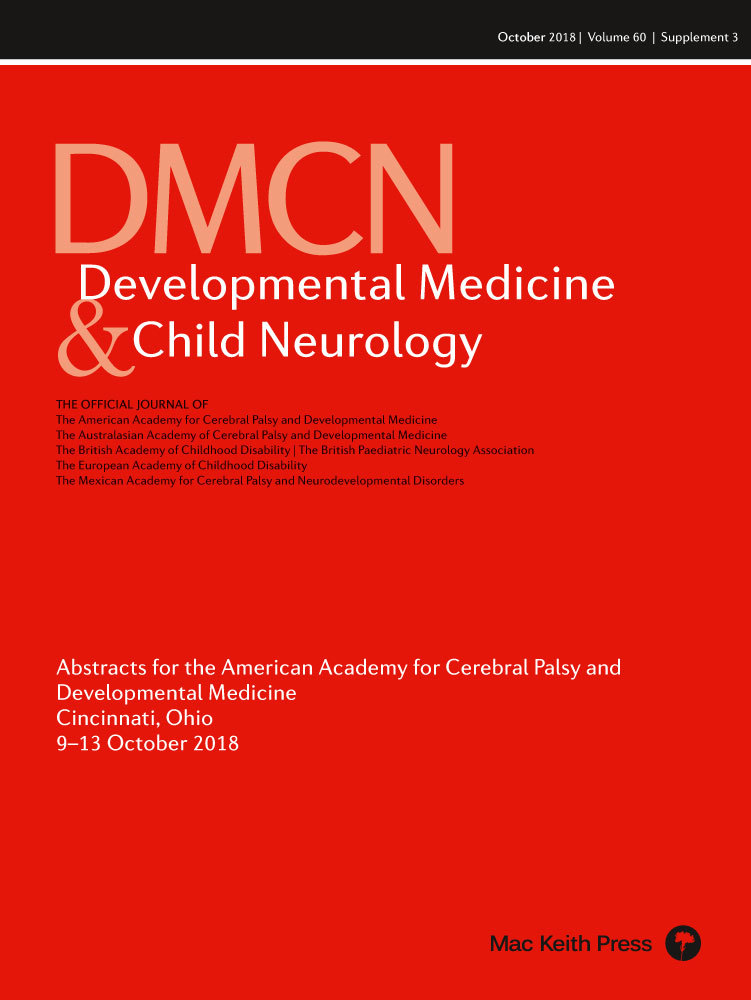How is daily performance associated with gross motor capacity in children with cerebral palsy?
SP8
C Gerber1, L Carcreff2, A Paraschiv-Ionescu3, S Armand4, C Newman1
1Paediatric Neurology and Neurorehabilitation Unit, Department of Pediatrics, Lausanne University Hospital, Lausanne, Switzerland; 2University of Geneva, Ecole Polytechnique Federale de Lausanne, Lausanne, Switzerland; 3Laboratory of Movement Analysis and Measurement, Ecole Polytechnique Fédérale de Lausanne, Lausanne, Switzerland; 4Laboratory of Kinesiology Willy Taillard, Geneva University Hospitals and University of Geneva, Geneva, Switzerland
Background and Objective(s): Children with Cerebral Palsy (CP) may often fail to use their full motor capacity in daily life activities. Comprehensive clinical follow-up requires not only an objective assessment of the children's capacity, but also of their daily performance. Technological progress has led to a surge in the use of wearable inertial measurement units (IMUs) for this purpose. IMUs provide new possibilities to measure gait performance and daily life activity.
Our aim was to objectively measure performance, quantified by physical activity (PA) states, in children with CP and explore its association with their gross motor capacity.
Study Design: Cross-sectional study.
Study Participants & Setting: A convenience sample of children with CP and GMFCS levels I to III, aged 7 to 18 years old was recruited.
Materials/Methods: Participants wore 5 IMUs, one on the trunk and one on each shank and thigh, during a complete school day. Six PA states were calculated as a percentage of the total measurement duration; 1. sitting/lying, 2. standing, 3. active short, 4. active moderate, 5. active long, and 6. active very long duration. Not all children attained the PA states 5 and 6 and were, therefore, divided in attained and non-attained. Participants’ motor capacity was measured with a standardized clinical assessment for children with CP, the Gross Motor Function Measure (GMFM-66).
We used Spearman correlations to explore associations between PA states and GMFM scores, and unpaired t-tests and ROC analyses to detect group differences in GMFM scores and cut-off levels. Alpha was set at 0.05 with Bonferroni correction for multiple comparisons.
Results: Fifteen participants with a mean age of 12.1 years (SD 3.5) were included. The mean GMFM score was 76.6 (SD 14.7). There was a strong negative correlation (□=−0.75) of GMFM scores with the percentage of time children spent lying or sitting (PA state 1) during a usual school day. PA states 2, 5, and 6 showed good to very good correlations with GMFM scores (□=0.75, □=0.81, □=0.73) while no significant correlation was found with PA states 3 and 4.
Children who attained PA states 5 and 6 had significantly higher GMFM scores then those who didn't.
Areas under the curve (AUC) of ROC analyses were 0.85 for PA state 5 and 0.81 for PA state 6. Referring cut-off levels (value of best proportion of specificity and sensitivity to discriminate between attained and non-attained) were a GMFM score of 73.4 and 82.6 for PA state 5 and PA state 6 respectively.
Conclusions/Significance: As expected, children with lower levels of capacity spent more time sedentary than those with higher levels who spent more time standing and achieved longer durations of active states. The non-significant correlation of active states of short and moderate duration with motor capacity, hints towards non-exploited capacity in these states, and could prove relevant for goal-setting.
The high AUCs and significant differences in GMFM scores between the group that attained highly active PA states and the one that didn't, let suppose that a certain minimal level of capacity is needed to achieve high levels of activity. Nevertheless, our results show that one cannot directly infer a child's daily performance from capacity measurements, and that certain children do not fully use their motor capacity in daily life.




